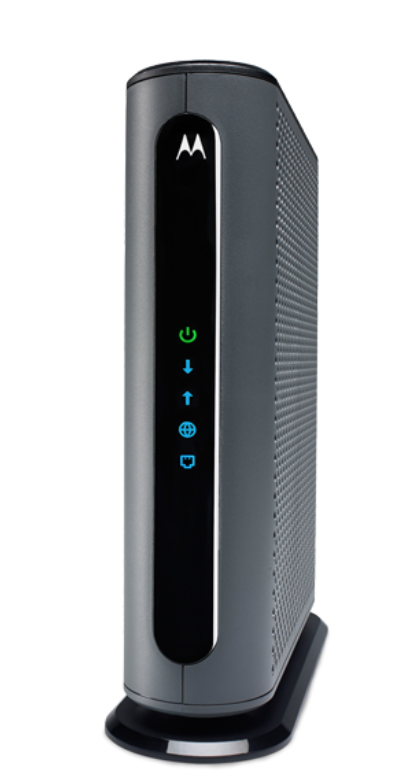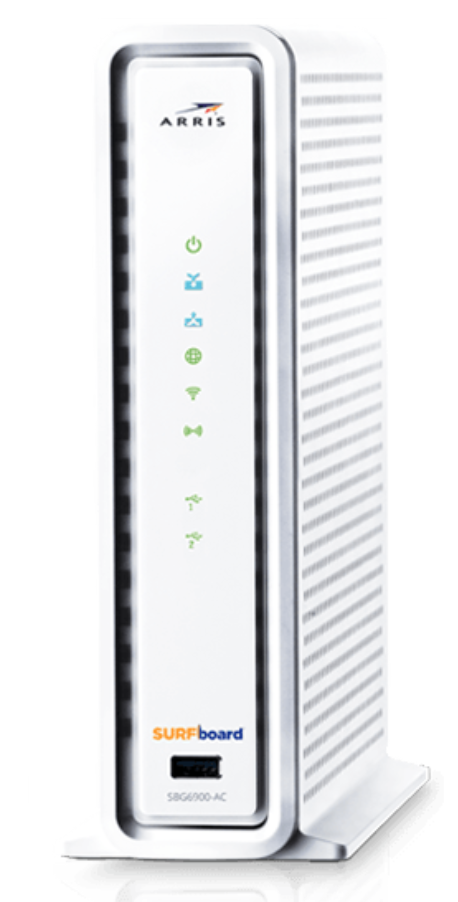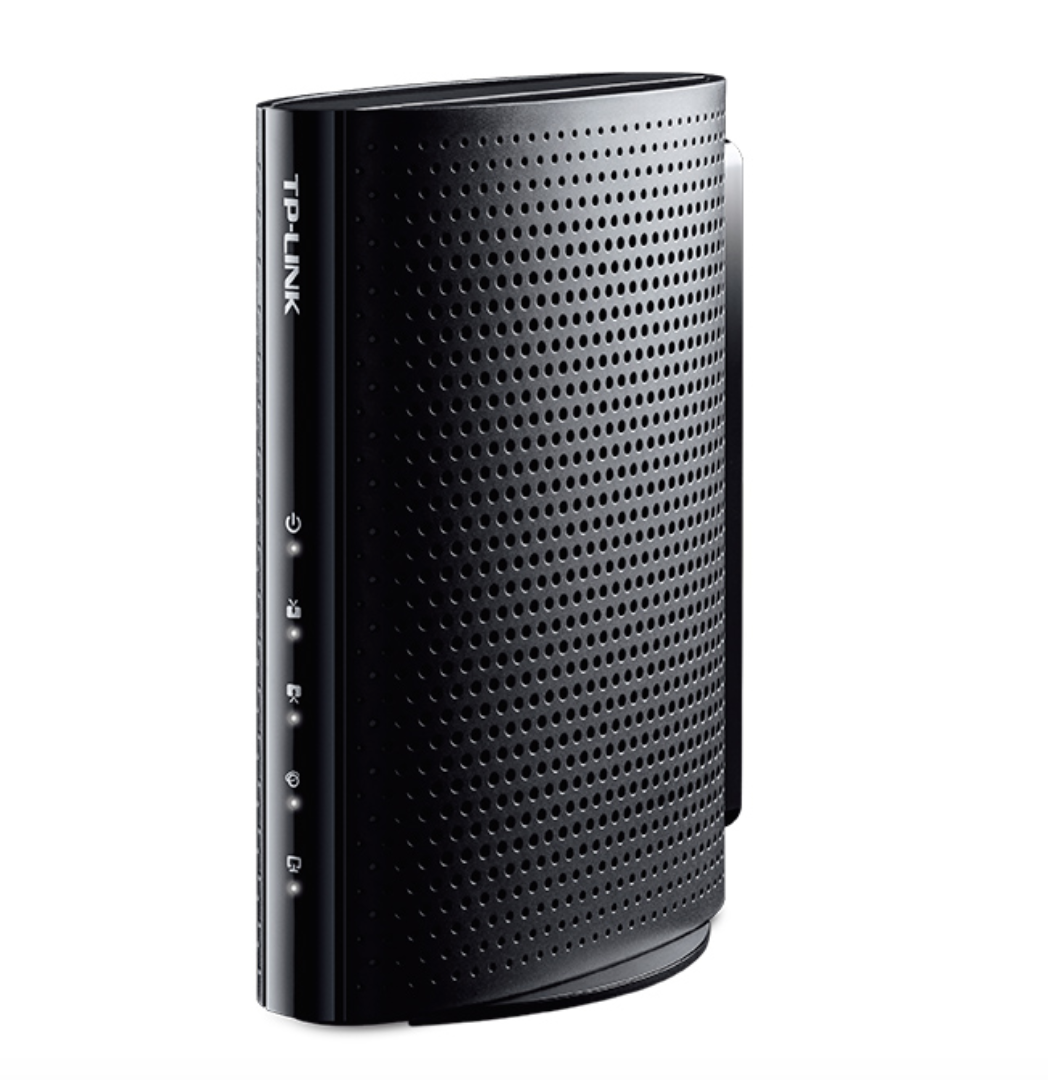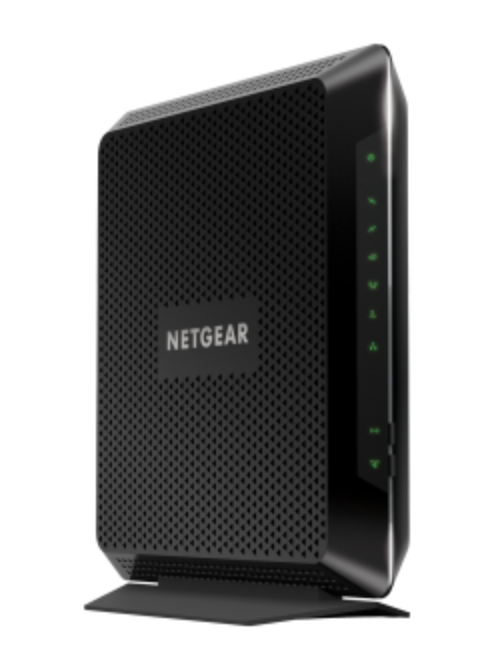Your cable internet company will probably try to convince you to rent a second-rate modem for $10 (or more) a month. But for many people, it makes more sense to buy a modem outright. You’ll get a better device, and it’ll be cheaper in the long run. This cable modem review will lay out the best models for different kinds of users. But first, let’s go over a few things to consider when buying a modem: The CM600 is the company’s simple, mid-grade modem that’s a fantastic mix of speed, reliability, and affordability. It uses DOCSIS 3.0 technology, is compatible with every major cable provider, and boasts some impressive user reviews. Here’s a deeper dive into the CM600’s specs. Well, the NETGEAR CM600 is like the Toyota Camry of cable modems. It’s reliable, great for small or mid-sized families, and it won’t break the bank. The first number (in this case, 24) is the number of “downstream” channels you have, or how fast your ISP can send information to you. The second number (in this case, 8) is the number of “upstream” channels, or how fast you can send information back to your ISP. So basically, 24 x 8 means you have a solid peak download speed and a pretty standard download speed. Make sure you’re getting a modem with enough channels to match your needs! The 3.0 in DOCSIS 3.0 just means it’s the third version of the DOCSIS technology. While DOCSIS 3.0 is the most commonly used form of the technology, it’s not the newest or most advanced. DOCSIS 3.1 allows for much faster cable internet speeds, and is beginning to be used in household modems. There is even a DOCSIS 4.0 that has been developed, although it’s not in any commercially available household modems. Here’s a deep dive into the best high-speed cable modem on the market. The Motorola DOCSIS 3.1 supports Ethernet bonding to reach download speeds up to 6 Gbps. (That’s fast enough to download a two-hour HD movie in about four seconds!) But most folks will probably just use it with standard gigabit speed internet (which is still ludicrously fast). Gamers will be happy to hear that this modem is also equipped with active queue management (AQM), which limits internet latency. That means faster loading of webpages, clearer video conferencing, and less lag in Fortnite. The Motorola DOCSIS 3.1 is made for speed, but it can still work with a slower connection. This cable modem also has DOCSIS 3.0 technology built in, which means that it can work with slower internet connections, all the way down to 1 Mbps. If you want to buy a modem for your 50 Mbps internet now, and think you might upgrade to gigabit speed internet in the future, the Motorola DOCSIS 3.1 could be a great investment. Speaking of investments, this modem comes with a two-year warranty. (That’s twice as long as NETGEAR’s warranties!) We love a long warranty like this, given the finicky nature of internet hardware. When it comes to compatibility, the Motorola DOCSIS 3.1 isn’t as universally supported as the NETGEAR CM600, but it does work with nearly every major cable company, from Xfinity to CableOne. The notable exception is RCN. (RCN customers who want DOCSIS 3.1 technology can check out the NETGEAR CM1000.) The ARRIS SURFboard SBG6900AC is known for its overall reliability, and it has a two-year warranty to back it up in case something does go wrong. Besides being reliable, this modem/router is decently fast. It uses DOCSIS 3.0 technology (like most modems) and has 16 x 4 channels. It also comes with four gigabit Ethernet ports, so you can hook it up to your Xbox or computer directly for an even speedier connection. The TP-Link DOCSIS 3.0 modem has the same speeds and uses basically the same technology as more expensive brands, all without breaking the bank. It’s the perfect match for your cheap-but-fast cable internet plan. Let’s take a closer look at this economical little machine. This modem can handle internet connections up to 300 Mbps (which is way more than most people need), comes with a two-year warranty, and is compatible with almost every major cable company. The only complaint we really have about the TP-Link DOCSIS 3.0 is one that’s common to cheaper modems: poor heat dissipation. That basically means the modem has problems with overheating, which can cause components to shut down, interrupting your connection. The NETGEAR Nighthawk C7000 is a deluxe modem and Wi-Fi router combo that will give you the kind of powerful, seamless connection that you need for modern gaming. For the fastest connection, you’ll want to plug your device directly into the Nighthawk modem using one of its four gigabit Ethernet ports (it also sports two USB ports). But don’t write off this modem’s built-in Wi-Fi router. If you want to have multiple gaming devices connected at once (LAN party, anyone?), it’s much easier to use a Wi-Fi network than to run cables through multiple rooms. With this modem, you’ll get network coverage for 1,800 square feet without losing virtually any speed. Sure, the Nighthawk C7000 isn’t the cheapest electronic purchase you’ll make this year. But it is compatible with almost every major cable internet company, including Xfinity, Cox, and Spectrum. Best for most: When it comes to overall value, no cable modem can beat the NETGEAR CM600. It’s got the speed and reliability that most families want and it won’t use up all of your Christmas bonus. Best for speed: The MOTOROLA DOCSIS 3.1 is the Maserati GranTurismo (or at least the Ford Mustang) of cable modems. It’s fast. Very fast. Best for budgets: The TP-Link DOCSIS 3.0 is good enough for most people, and it’s about half the price of compatible modems. Best for gaming: If you spend more time streaming to Twitch than you do streaming Netflix, then you should probably get your hands on the NETGEAR Nighthawk C7000. These are our picks, but we want to know what you think. Do you love your NETGEAR modem? Do you have a complaint about your ARRIS device? Tell us (and other readers) all about in the comments section!





